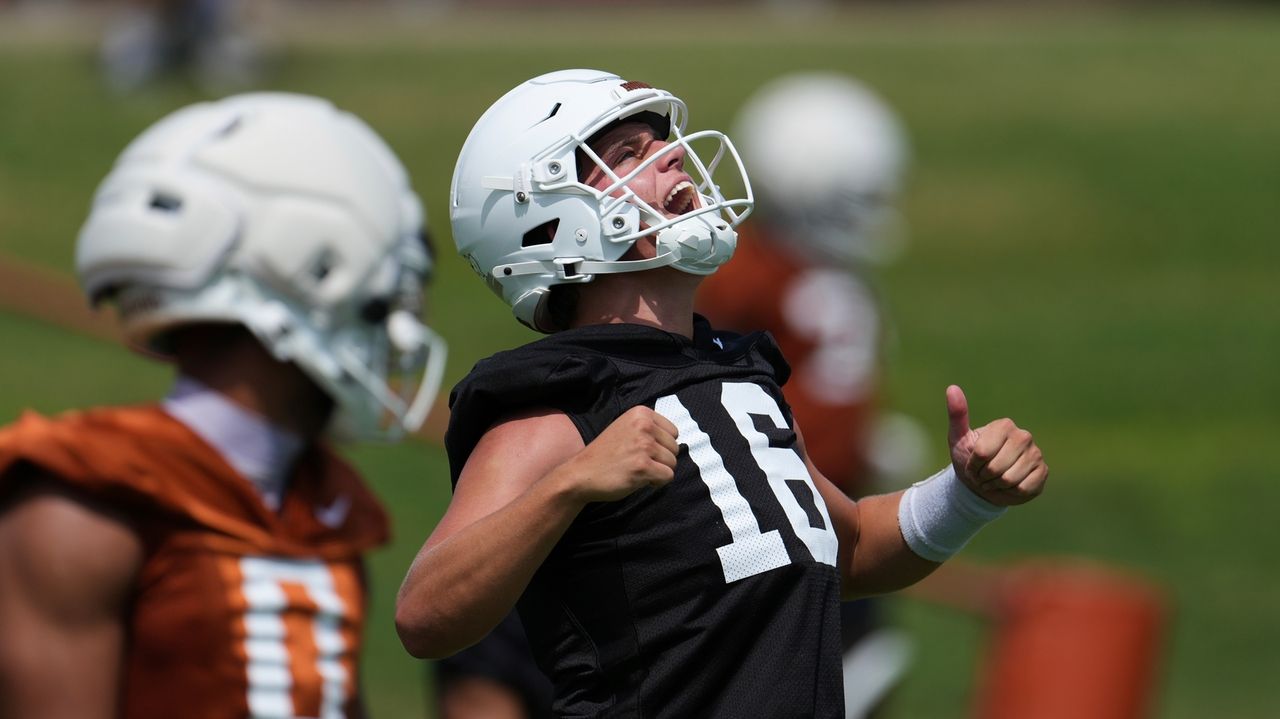The Associated Press Top 25 college football poll started in 1936, the brainchild of former sports editor Alan J. Gould.
The number of teams ranked, the number of voters on the panel and how the ballots are tabulated has fluctuated over the years, but no news organization has been ranking teams and naming a major college football national champion longer than the AP. It has been the Top 10, Top 20 and, since 1989, the Top 25.
With the preseason poll set to be released on Monday, Aug. 11., here is how it works:
Who are the voters?
AP Top 25 voters are writers and broadcasters who cover college football for AP members and other select outlets. AP employees do not vote, but they do choose the voters. In recent years, the number of voters has been around 60, and they come from all over the country.
The goal is to have every state with a Football Bowl Subdivision school represented by at least one voter, and the total of number of voters from each state tends to increase with the number of FBS teams. There are also spots reserved for national voters.
How do they vote?
There was a time when voters called, emailed and faxed their votes to the AP. Long ago, the ballots were tabulated by hand.
Now voting is done online and all the tabulation is automated.
Ohio State wide receiver Brandon Inniss participates in a drill during NCAA college football practice in Columbus, Ohio, Friday, Aug. 1, 2025. Credit: AP/Paul Vernon
There is a 1-25 point system, with a team voted No. 1 receiving 25 points down to 1 point for a 25th-place vote. After that, it’s simple: The poll lists the teams with the most points from 1 to 25 and others receiving votes are also noted.
When is the voting done?
Except for the first two polls and the final poll after the national championship game, the Top 25 rankings are released on Sunday afternoons. That gives voters time to assess the results of Saturday’s games ahead of the poll release at 2 p.m. Eastern.
Voting guidelines
The AP allows wide latitude for voters to determine their rankings. They are urged to base their votes on performance, not reputation or preseason speculation; to avoid regional bias, for or against; to pay attention to head-to-head results; and to make significant changes if desired. Teams on NCAA probation are eligible for the AP poll.
Awards and All-America teams
AP poll voters also participate in the selection of AP honors. Coach and player of the year voting is done on a top three basis, with 3 points for first-place, 2 for second and 1 for third. The voters also select both the preseason and postseason AP All-America teams, a tradition that this year turns 100.
Clemson quarterback Cade Klubnik (2) throws a pass during an NCAA college football game against South Carolina, Saturday, Nov. 30, 2024, in Clemson, S.C. Credit: AP/Jacob Kupferman
Changing times
In the early days of college football, polls declared national champions before postseason games; not until 1968 did the AP begin releasing a final poll after bowls were played. Years of controversy followed, with endless arguments over how to determine a true champion.
After back-to-back seasons with split titles in 1990 and 1991 came two decades of different systems: the Bowl Alliance, Bowl Coalition and Bowl Championship Series all tried to pair the two best teams in the country to play for the title. Those organizations relied on a combination of polls, computer rankings and strength of schedule, a formula that has been tweaked many times but remains a sore spot to this day.
The BCS turned into the College Football Playoff in 2014 with a four-team postseason that was the first time major college football had something that felt and acted like a true bracket. Now the CFP is up to 12 teams — and looking to expand again — and the AP Top 25 is still ranking the top teams.
